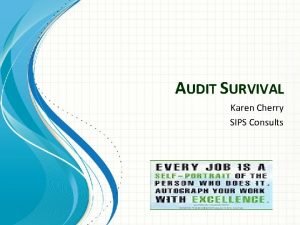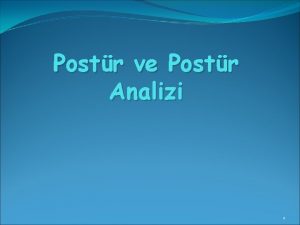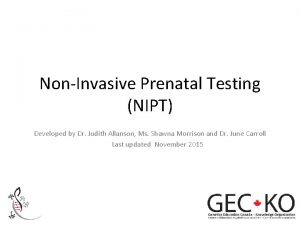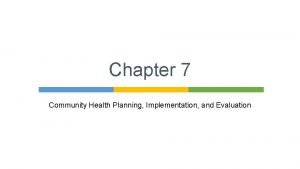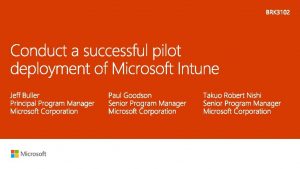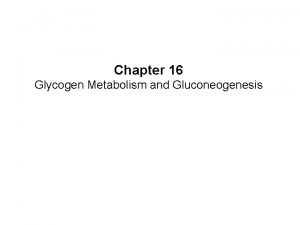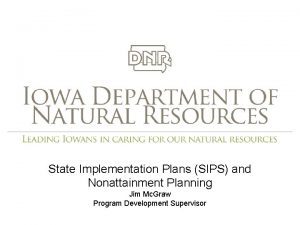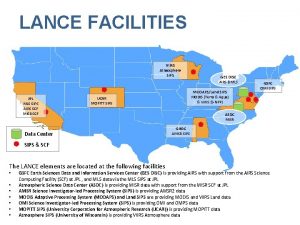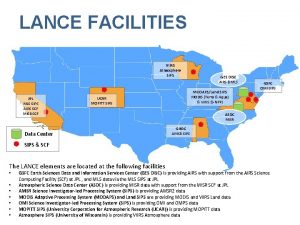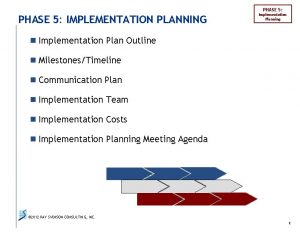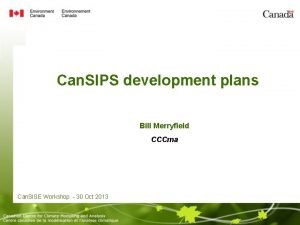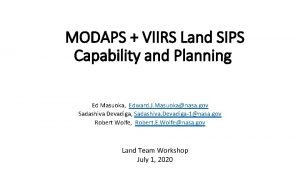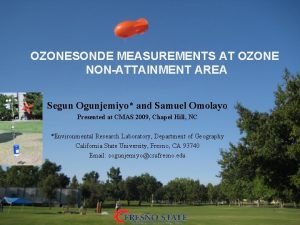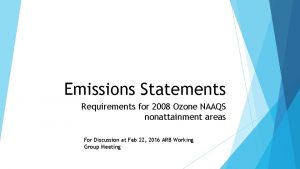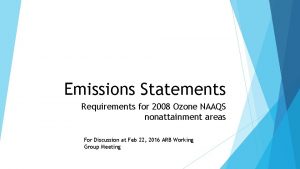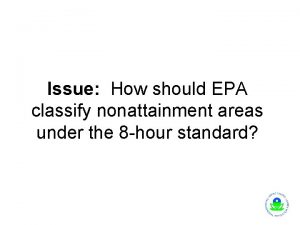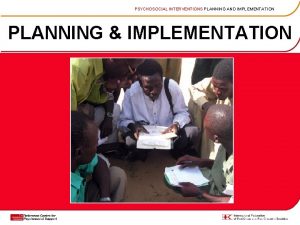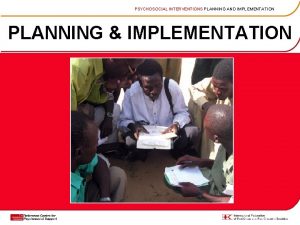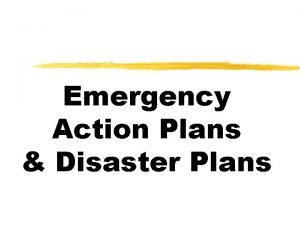State Implementation Plans SIPS and Nonattainment Planning Jim

















- Slides: 17

State Implementation Plans (SIPS) and Nonattainment Planning Jim Mc. Graw Program Development Supervisor

Air Program Development Activities • Collaborate with affected stakeholders to: – Implement new/revised air quality standards – Devise strategies for improving air quality in nonattainment and maintenance areas – Adopt & implement new/revised Federal air emissions standards – Develop rules and programs to implement legislation 2

Program Updates and State Implementation Plans (SIPs) • Periodically updated with EPA to ensure latest requirements are being included in Iowa’s implementation of the Clean Air Act – Demonstrates that Iowa has the basic air quality management program components in place to implement a new/revised NAAQS, including permit issuance – Identifies the emissions control requirements the will be relied on to attain and/or maintain the NAAQS • SIP types: 3 – Infrastructure- authority and resources to implement new/revised NAAQS – Nonattainment- control strategy for bringing area back into attainment – Program- adoption of new federal requirements for permitting, monitoring, emissions testing, etc.

NAAQS Changes Trigger SIP Revisions Attainment designations & nonattainment boundaries 4 Collaboratively develop changes to rules and guidance New standard implemented

Program Updates Require Team Effort DNR Program Updates Affected Stakeholders 5 EPA and Public

Planning Unit Staff 6

Diverse Bureau Expertise Contributes to Program Updates • • 7 Ambient Monitoring Emissions Inventory Permitting Stack Test Observation

Collaborating with industry, public, environmental stakeholders to reduce high pollution levels • Fine particle air pollution in Muscatine – Finalized emissions control plans for 24 -hour standard in February 2014. – Recommended attainment for the new annual standard. • Emissions of Lead in Council Bluffs – Working with facilities to address recent violations. – Finalize emissions control plans by Fall 2014 • Sulfur dioxide emissions plan for Muscatine – Successfully argued to EPA to limit the extent of the nonattainment area. – Timely development of emission control plan (April 2015). 8

Questions? Contact Information: (515)725 -9543 jim. mcgraw@dnr. iowa. gov www. iowacleanair. gov 9

Local Programs Implementation & Oversight 10

Local Programs In Iowa • Two local programs: – Linn County Air Quality Division (Linn County Public Health) – Polk County Air Quality Division (Polk County Public Works) • Any political subdivision may conduct an air pollution control program (455 B. 144) • Must obtain a certificate of acceptance (455 B. 145) – Demonstrates local program has met the necessary criteria (identified in 567 IAC Chapter 27) to have a delegated air program 11

Service Agreements (28 E) • Specifies extent and manner of cooperation between DNR and Local Programs in conducting air pollution programs • Agreements provide – Scope of work for permitting, compliance, and monitoring activities – Identify maximum funding levels – Specify reporting requirements • Negotiated and renewed annually with EPC approval 12

Local Program Activities • Permitting – Construction Permits and Modeling – PSD Permits and Modeling (Linn County) – Title V Operating Permits • Compliance and Enforcement – Facility Inspections – Stack Test Observations – Complaint Investigations • Ambient Air Monitoring DNR retains Asbestos, Emissions Inventory, and SIP functions 13

Local Program Staffing • SFY 15 Staffing: – Linn County: 9. 5 FTEs – Polk County- 9. 0 FTEs • Staff Positions: – – – 14 Air Quality Manager Air Permit Engineers Air Quality Specialists Ambient Monitoring Specialists Administrative Support Specialist

Local Program Funding (SFY 15) Linn County $1, 072, 000 Funding Source Polk County $1, 142, 000 Percent of Total Funding Source Percent of Total Title V Fees 65% Title V Fees 62% 105 Grant 15% 103 Grant 2% Local Program 21% 15

Local Program Reviews and Performance Tracking • DNR required to review and evaluate local programs (455 B. 134) • On-site reviews conducted every 2 years for each program – Linn County- odd years – Polk County- even years • Bi-annual meetings • Quarterly reporting -Payments are cost reimbursable 16

Questions? Contact Information: (515)725 -9543 jim. mcgraw@dnr. iowa. gov www. iowacleanair. gov 17
 Sips education work experience
Sips education work experience Sips consults
Sips consults Siaslar
Siaslar Placenta mosaicism
Placenta mosaicism Community health planning and implementation certificate
Community health planning and implementation certificate Intune implementation project plan
Intune implementation project plan Crm planning and implementation
Crm planning and implementation Good state and bad state graphs
Good state and bad state graphs N planning
N planning Short term planning and long term planning
Short term planning and long term planning Figurative language slideshare
Figurative language slideshare Absorptive state and postabsorptive state
Absorptive state and postabsorptive state Structure of glycogen
Structure of glycogen State state graphs and transition testing
State state graphs and transition testing Strategic planning vs tactical planning
Strategic planning vs tactical planning Goal achievement matrix
Goal achievement matrix Role segmentation workforce planning
Role segmentation workforce planning Perencanaan kapasitas dan agregat
Perencanaan kapasitas dan agregat

